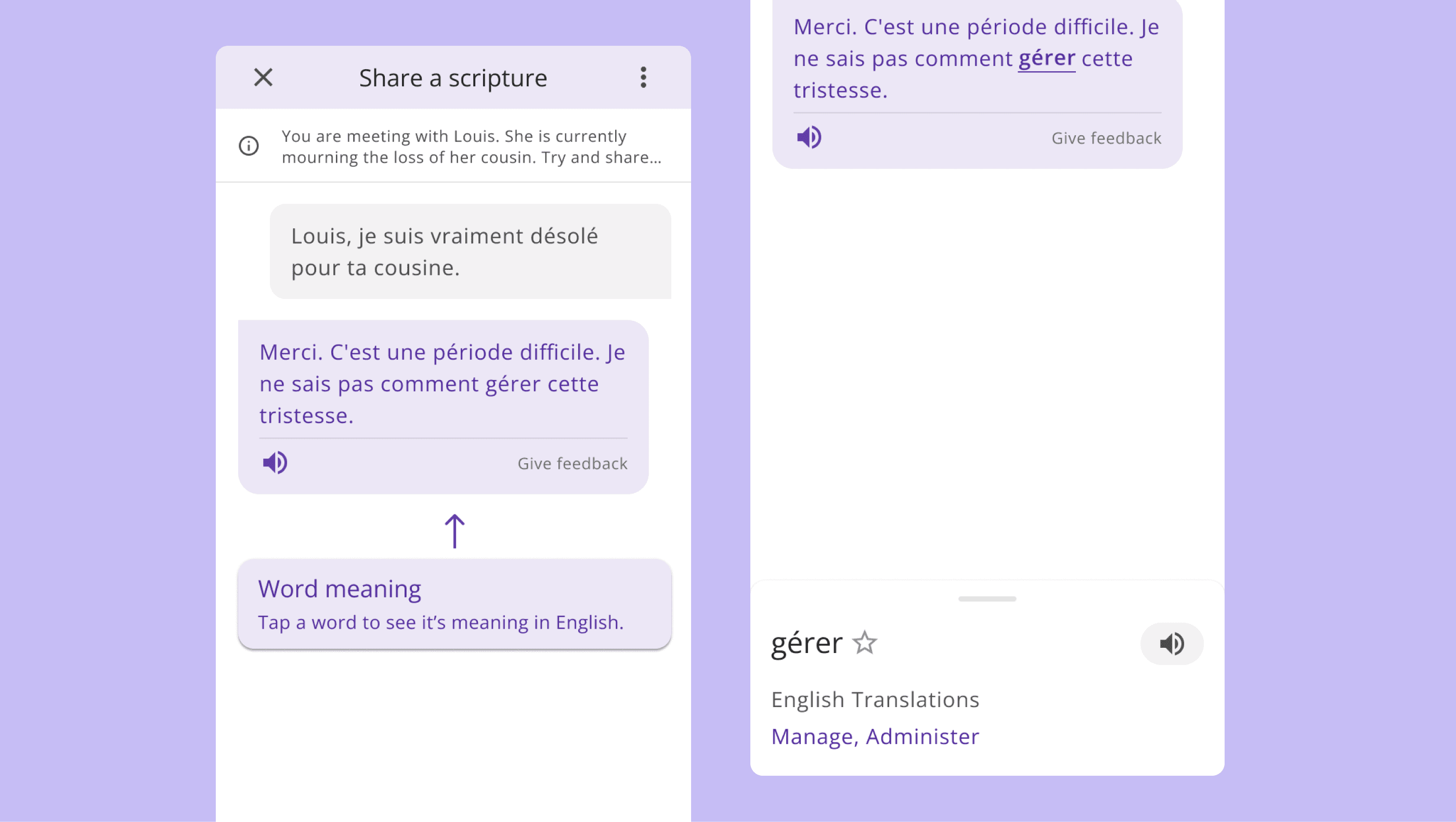AI Missionary Chatbot
Creating a language practice tool for missionaries in a language learning app. This tool uses a chatbot to mimic everyday situations.
TL;DR
New feature to enhance language learning for LDS missionaries through realistic conversational practice. In response to user feedback, we integrated help features to improve navigation and usability, ensuring all missionaries can effectively engage with the technology regardless of their language proficiency.
Impact
Increase in user ability to complete conversations
Initial feedback indicates an increase in the users confidence and completion rate of AI conversations. With the new help features, missionaries were able to complete conversations more consistently.
Background
Embark is a language learning app used by LDS missionaries. With the rapid advancement of Artificial Intelligence (AI), the opportunity to leverage this technology to enhance language learning has become apparent. The Machine Learning (ML) team, having done all the groundwork on AI capabilities and potential applications, approached the design team with the initial idea and a proposal to develop Embark’s first AI feature.
Goal
This collaboration aimed to enable missionaries to practice common scenarios they might encounter on their missions, providing valuable feedback to help them improve their language skills.
Research
We started by thoroughly studying existing chatbot experiences. Working closely with the ML team, we clearly defined the project requirements. Exploring AI image generation led to creative ideas on how to use this technology. To make sure the feature would be relevant and effective, the ML team conducted surveys to identify scenarios that would be most useful for missionaries.
Character images generated during our research
Design
Brainstorming
Armed with clear requirements, each member of the design team crafted wireframe concepts. These initial designs were then collectively reviewed, merging the strongest elements from each to form a cohesive design approach.
Initial wireframe concepts
Prototyping
After we landed on a combined design we created a high fidelity prototype to test the usability of the concept.
Initial prototype
After validating our initial design, we collaborated with developers to create a functional prototype that allowed missionaries to interact with the chatbot.
Testing
We tested the prototype with five missionaries. They liked the feature, but we found some areas needing improvement:
Scenario details users would have to scroll back up to the conversation to see.
Solution
Dynamic Characters
To maintain engagement, dynamic characters are generated for each scenario, reflecting the demographics of the missionary's assigned mission area. Each scenario’s goals slightly vary to enhance the learning experience, accompanied by a newly generated character image.
2 example characters and scenarios
Scenario Bar
Testing revealed users often scrolled to revisit the scenario description. We introduced a scenario bar allowing users to tap and open a sheet displaying the character's image and the scenario’s objective.
Scenario bar shown (Right)
Tap for meaning
Noticing that newer missionaries were unfamiliar with some words used by the chatbot, we added a 'tap for meaning' feature. This allows users to tap any word from the chatbot to see its translation and save it for later study.
Assistant
We added an assistant feature to help new missionaries. It translates words for conversations. It also suggests conversation topics if needed.
Conclusion
This feature is currently in early testing, and we’re excited about the positive response we’ve seen so far. It’s being piloted with a small group of missionaries, and we’ll use their feedback to make improvements











